With L2, L-Acoustics has made an innovative, original and decidedly practical choice. Is it a winner for both the manufacturer and sound companies, does it address a recognized requirement and, certainly not the least important criterion to consider, does L2 sound good? Find out below!
But first of all, if you’re not at all familiar with the L2 system and its indispensable LA 7.16 controller, click here, we’ve already talked about it at some length.
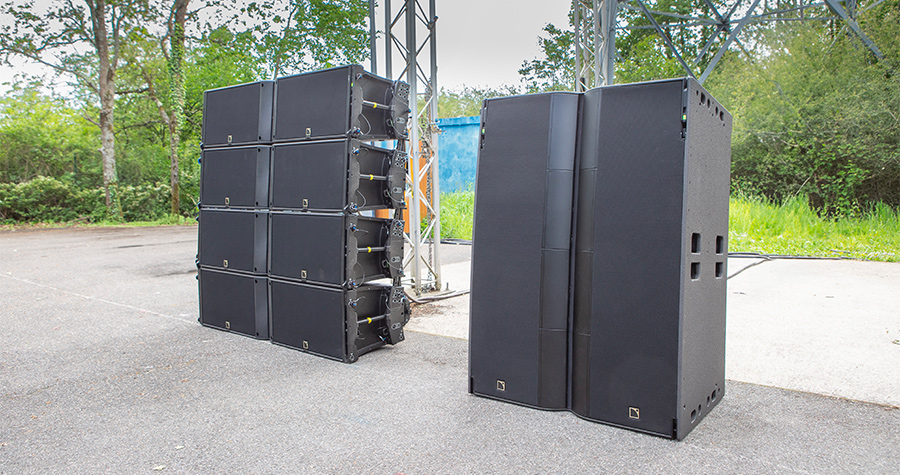
Off to Marcoussis
It’s always a pleasure to arrive in Marcoussis and, as well as handshakes and hugs with old friends, there’s also an impressive number of new faces, many of them from all over the world. Talent knows no borders. Like every time we visit, we get a bit lost. The walls are either pushed back or a new building is added to accommodate the growth of our French sound giant.
A stroll along the assembly lines also shows the extent to which well-targeted recruitment has led to the evolution of the tools of the trade and the various procedures, and the level of quality to which the in-house QC pushes its approach. The slightest discrepancy, even if barely visible, in the height of the grille or fabric, the smallest non-conforming grain or chip on the cabinetwork, or the slightest noise when the box is listened to (at low level) results in the box leaving the line and being labelled with a colored sticker and a description of the fault detected.
Quality and durability are assured over time, thanks to comprehensive archiving of the curves and data for each new enclosure, making it possible to compare them with the same box several years and thousands of hours of use later.
Although on the day of our visit a large K1 and K1-SB order was occupying the production lines, some (very complex) L2 cabinet-making in the workshop proved that the Marcoussis firm was already working on this product, in order to be able to fill the first orders for the autumn of 2023.
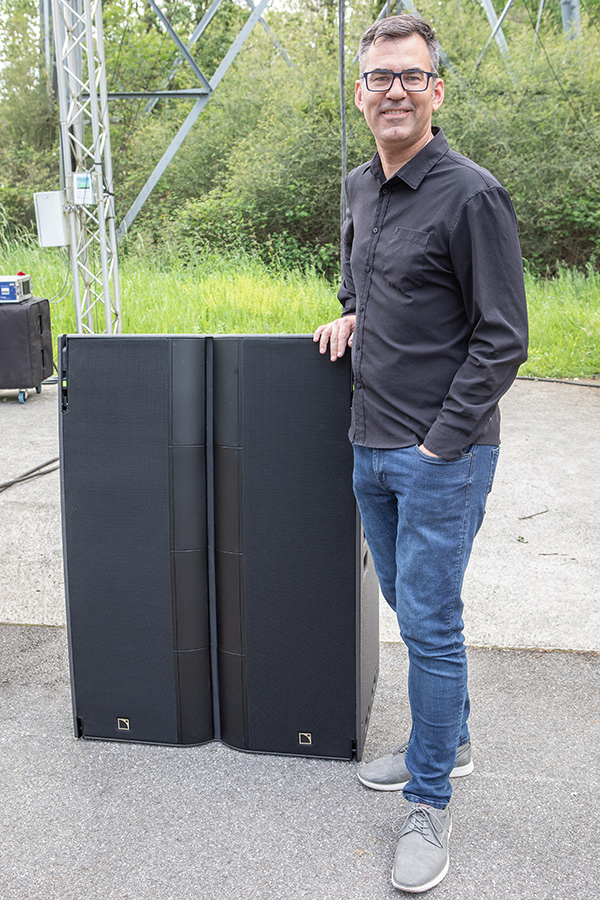
On hand on the day of our visit was Scott Sugden, Director of Project Management, Electronics & Software, the consummate combination of super sound technician and brilliant product manager.
With him, we enjoyed a series of pertinent and informative questions and answers.
SLU : What happened to the hole for moving the Panflex?
Scott Sugden : All gone! Clack! Clack! You tap it and it comes out, then you tap it again with your fist and it goes in. Don’t worry, it’s extremely solid. We made this choice because we had a little imperfection generated by this hole when we measured it, and the polar pattern suffered as a result (laughs).
We also modified the fin so that part of it folds up underneath to reduce space requirements on the front and prevent a gap from forming on the side of the fin.
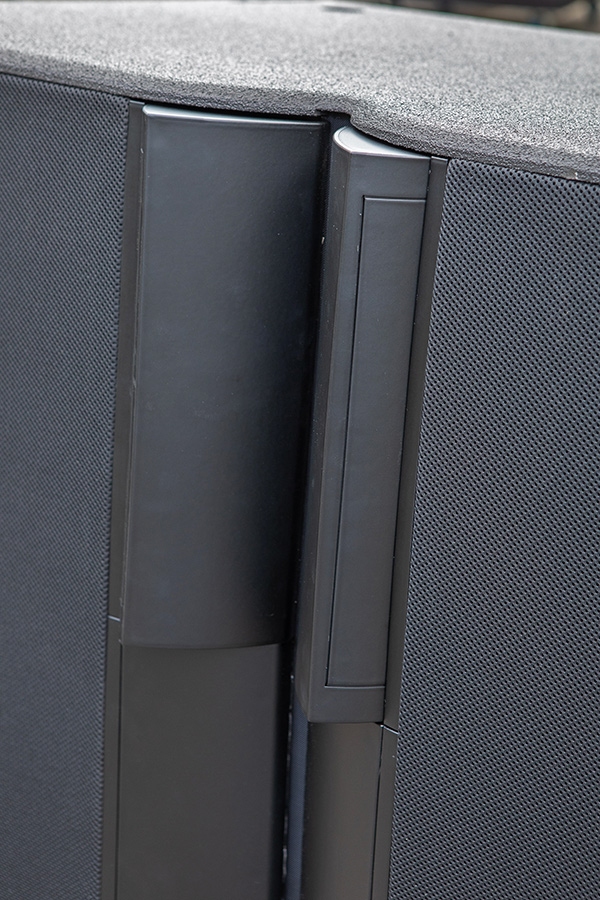
SLU : How do you like the look of L2? We’re getting some unconvinced feedback at SLU.
Scott Sugden : Personally, I don’t really have an opinion, but in France I’m used to criticism on social networks (laughs). For example, I’ve heard that the underside of the L2D cabinet is slanted…
If you look closely, it forms a right angle with the front of the last “integrated enclosure” in the system, exactly like a classic line-array element open to the maximum angle, which is the case here since L2D opens to a total of 60° vertically. The French are quite conservative, while we innovate a lot, which no doubt explains this.
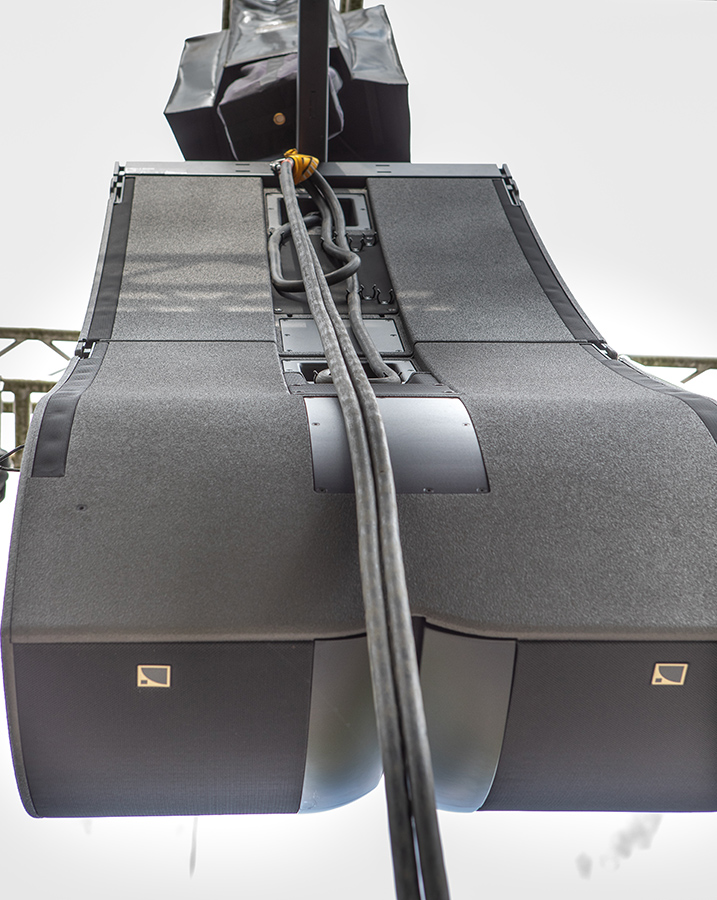
SLU : That’s the cable routing at the rear…
Scott Sugden : We’ve taken advantage of the L2 system’s small-section multicore and limited number of elements (maximum of four). This means they can be snaked and invisibly fixed to the rear with four rows of cable clamps.
Our Cable Management system is designed to exit through the bumper. Of course, L2D, which is always used at the bottom of the system, has no clamps, unlike L2, which has four.
Listening
As always with L-Acoustics, the listening session is carried out in a very structured way, outdoors, with one system flown from a gantry and a second deployed on the ground, side by side with K2. We begin with an A/B between the two, using the same soft guitar-voice track, Hurt, by Youn Sun Nah. Without any subs.
While the character is the same except for a few details, the depth at the bottom end of K2 is slightly less evident on L2. This becomes more apparent with the subsequent track. Being 2-way + bass extension on the one hand, and 3-way on the other, the reproduction of the female human voice also changes a little, as it is shared between four 6.5” and two drivers in K2, and between two 10” and two 3” drivers in the other. L2 seems more precise and defined with, if not measurable energy, superior clarity in the upper midrange, accompanied by a slightly fuller extreme treble.

The next track, Keb’ Mo’s Wake Up Everybody, features greater dynamics and warm, well-defined material at the bottom end. L2’s sound is clean, analytical and as precise and incisive as ever at the top – a sound that could be described as more modern and that needs subwoofers more than K2’s 6.5” and 12”, which are very generous at the bottom and sound more “familiar” to our ears. Better? I don’t believe so, but L2 lacks the “glue” of the last (or first) octave, despite a punchy, ultra-defined bottom end that measures well, rounded out by the 12”, which isn’t there just to cancel the rear wave.
We take advantage of this track to check out the remarkable polar pattern. From 0° to 40°, there’s a very slight, almost wide-band drop. Beyond that, we start to notice the 6 dB drop, then it plunges sharply (listening at 110°) and, once again, we get the feeling that the volume is being lowered because it’s so consistent. At the rear, it’s almost dead calm. Nothing to listen to. The logical attenuation of the drivers is compounded by that of the 1”, of which very little low end remains. For a first venture into the world of cardioid heads, this is a complete success for the R&D team at Marcoussis.
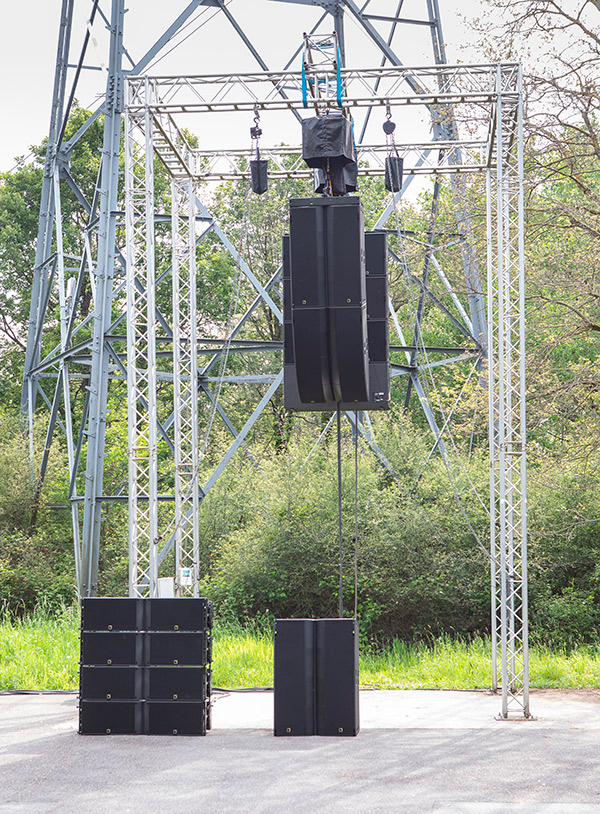
To drive the point home, Scott plays the K2 stack while we’re behind L2 and, after scolding him for cheating, we understand even better the usefulness of the cardioid heads.
Energy is needed up front, not in the rafters knocking down confetti from the previous show. The K2’s abundant bass is omnidirectional, and you can hear it.
We then switch L2 from Cardioide to Supercardioide, a practical choice when you want to ease up on the sides up to 110 Hz, while tightening the rest. This can be useful in several configurations, such as a simple left/right at the sides of the stage, where a little pressure is desirable.
The result is immediate and without any transition noise…
The next test track demonstrates the consistency of the tonal balance from 55 meters away right up to in front of the system, with it flown at a height of around ten meters. Only a few dB of difference should be perceptible. The selected track is Birds, by Dominique Fils-Aimé, featuring vocals, a very dry double bass and a drummer/percussionist. The results are very good, despite the side wind that has picked up around the L-Acoustics launch pad. Only under the system, or nearly so, is a difference, logically, perceptible.
Let’s not forget, though, that it’s quite rare for the bottom box to be so close to the ground, it’s also rare to be able to get right up underneath it. When questioned, Scott points out that Beam Shaping, which has maintained perfect dispersion and balance, can’t work miracles at or near point 0. He also points out that with L2 it’s now possible to work even better at the lower end of the spectrum when coupling two or, even better, three L2 elements.
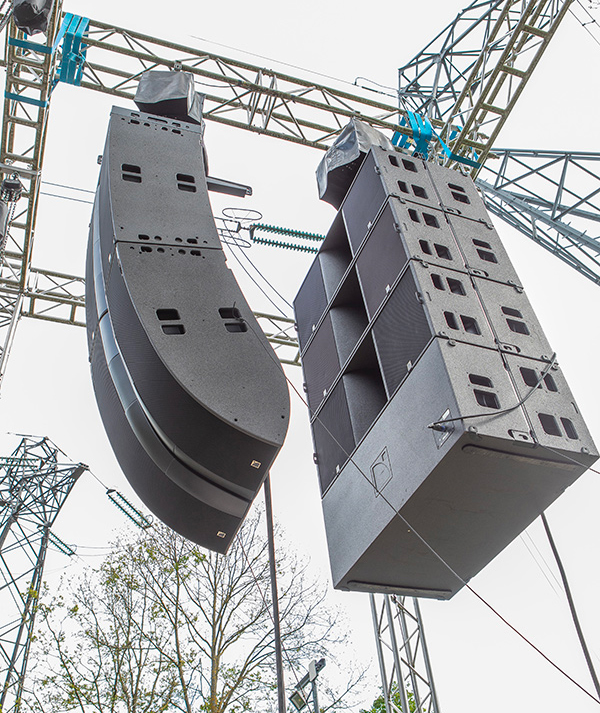
SLU : Aren’t the angles of L2, if I’m counting right, 10 + 60, 70°, a bit too extreme for a flat horizontal throw?
Scott Sugden : Of course it is. The array is too low and too angled. If we’d mounted eight K2s in the same configuration, 10° or 15° would have been sufficient. We’re at the theoretical limit of PULS (Progressive Ultra-dense Line Source) technology. The proof is that we can work flat, but the system was designed for rooms with a certain audience height and an angle with the stage.
This is the conceptual choice we’ve made to meet the widest possible range of requirements. The system, as assembled with an L2 and an L2D, will suffice for a very large number of shows worldwide, with a capacity of a few thousand spectators and a 15-meter hang.
SLU : There are eight 10-inch and four 12-inch speakers in each L2 enclosure. Are the 10-inch units filtered in the low end of the range?
Scott Sugden : No, they both work in full-range mode and go down to 45 Hz, they just have a different loading and role, and you’ll see with this last track that L2 delivers the low end.
L2 on its own is great, but it really shines when combined with subs
The track used to demonstrate L2’s dynamic capabilities and low end without, and finally with, subs, is none other than Donald Fagen’s Snowbound, with the late Walter Becker accompanying him on guitar and bass. And what a bass. A comparison with K2 still gives the latter system a slight advantage in terms of low midrange, the onset of infra and the fuller nature of the bass, while the rest of the spectrum seems more percussive, incisive, and faithful with L2. The bass of L2 is like the beater on the head of a bass drum, the information is there, it just lacks a bit of contour and a few Hz, and for that, KS28 is the ideal sub.
When the end-fire array of four KS28s is added, and fortunately played at the right level, L2 really comes into its own. Its precise dynamics and impact are complemented without loss of focus or any kind of distortion. In this respect, KS28 and LA12X are a major improvement over SB28 and LA8. If you want to nitpick a little, and everyone can do so or not as they please, a plateau of two little dBs from 3 kHz would give even more relief and crispness to L2 + sub compared to K2.
L2 solo is fine, but it really comes into its own with subs.
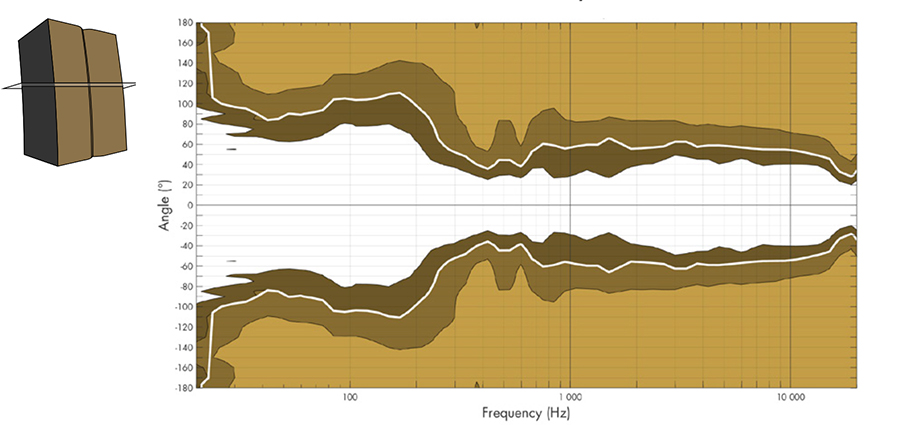
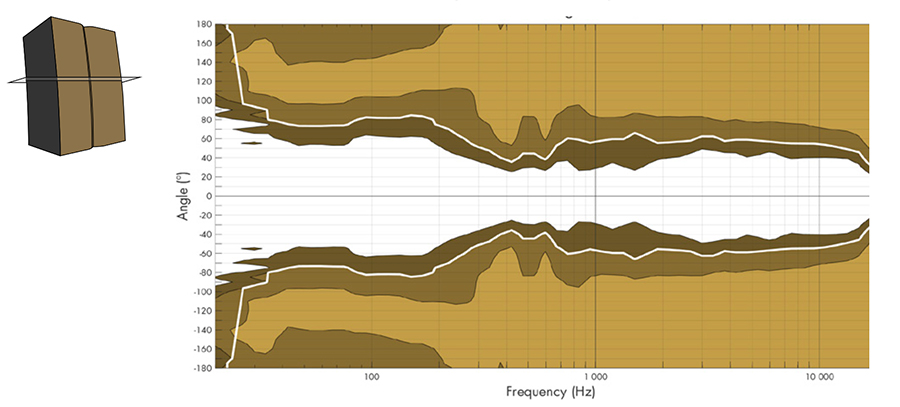
Faced with our questions about the bass and the ability of LA 7.16 to cope with heavy, even overloaded, mixes at the bottom end, and L2 to cope with them, we were treated to the great track that’s great, unless you’re a membrane and a power supply, Mansa, by the Super Rail Band from Mali. Before the days of well-engineered protection, this track would have blown out domes and bulged voice coils, if not worse.
This track is played right at the edge of the limiters, and it’s a joy. The snare slams hard, loud and clear, and cuts through impeccably, with the kick pulling an endless bass note behind it, too. Of course, there’s a trick. The contour and bottom octave are served up on a platter by KS28 and LA12X, which takes a lot of the load off the LA7.16’s shoulders. That said, the rest of the spectrum is delivered with no apparent effort and a newfound clarity, no doubt due to L2’s two-and-a-half-way configuration and the wealth of resources available for each transducer.
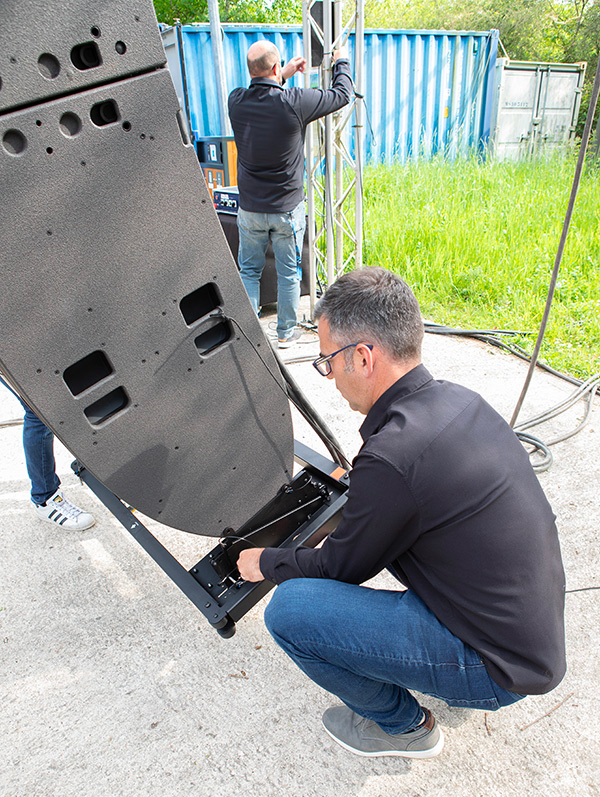
Asked about the potential left in the LA7.16’s power supply, Scott is serene: fifty percent. 50%. A glance at the screen and the track does indeed pull on the 16-armed beast, but it’s far from bringing it down.
Scott Sugden : “We tested L2 with LA7.16 for many months and with a wide variety of musical styles, storing the logs. Very recently L2 and LA7.16 were used at the Mojave Tent in Coachella, (three L2s per side to cover the first 50 meters and 16 KS28s on the ground, plus K2 delays). It’s the third-largest stage in terms of capacity, with a maximum capacity of 20,000.
“We were thus able to gather a wealth of comprehensive information, including not only the power supply, but also the spectral content of the amplified signal and FoH levels. Only once did we exceed the 50% mark, and that evening it was 106 dB (A) at FoH. Definitely the L2 and LA7.16 combination works, and this amplified controller was designed specifically for this system, so there’s no question about it!”

With Fred Bailly dropping in at the end of the demo, we complete our list of questions about L2 and its relationship with the manufacturer’s two big subs.
Fred Bailly : L2 works perfectly well with KS28 and KS21. With KS28, the crossover is a little higher than usual, at 70 Hz. With KS21, where a few Hertz are missing compared to KS28, it’s perfect with the preset at 60 Hz. The advantage of this latter sub is its small size. Flown behind L2, it disappears completely and packs a remarkable punch.
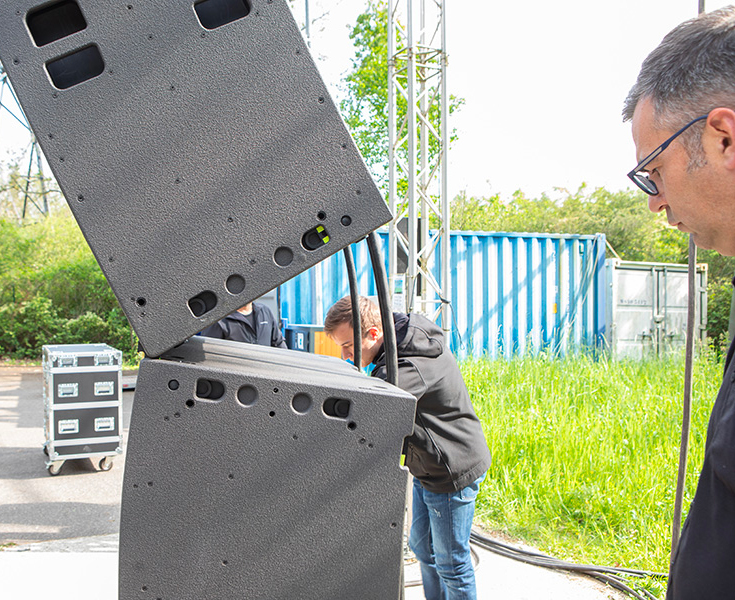
A quick look at the process of taking L2 down from the Marcoussis test rig shows just how simple and quick it is to operate. We’ll spare you Scott’s joke, but really anyone can lift L2, and hooking it up from the front and locking it from the rear is child’s play.
With no angles to negotiate, a lightweight cable and rear latching, the ergonomics of this system are virtually unbeatable. Once the position of the arrays and their composition have been determined, they can be flown in a matter of minutes, with the rest of the set-up taking place behind the screen at FoH.
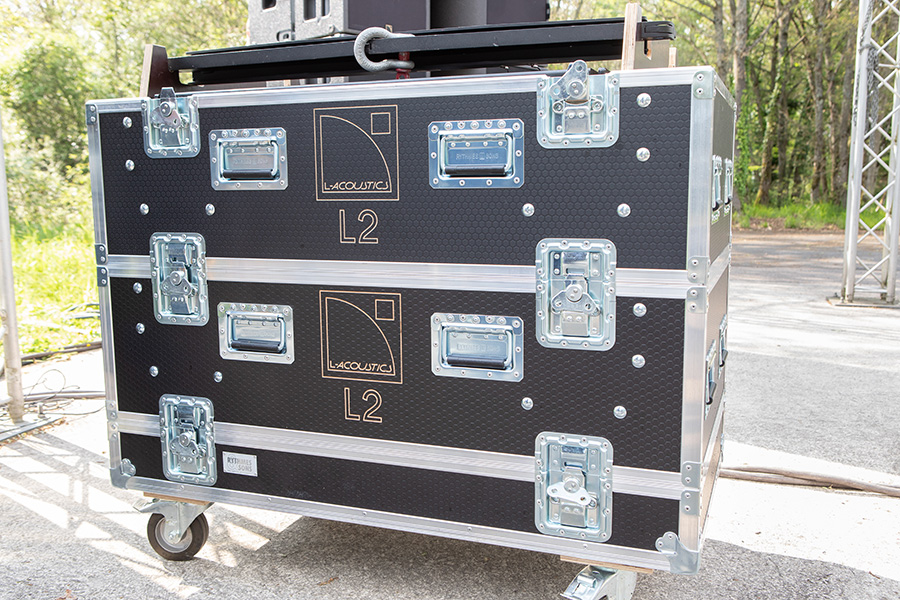
Famous Last Words (One more for the road)
L2 is not only a breakthrough in terms of ergonomics and ease of use, but also, and above all, a new sound solution. Its ideal coverage, thanks to its high level of precision, and its near-full-range output to within a few Hz and dB, make it a perfect match for KS28, whose potential for impact and fullness in the 30-60 Hz octave complements L2’s “modern” energy.
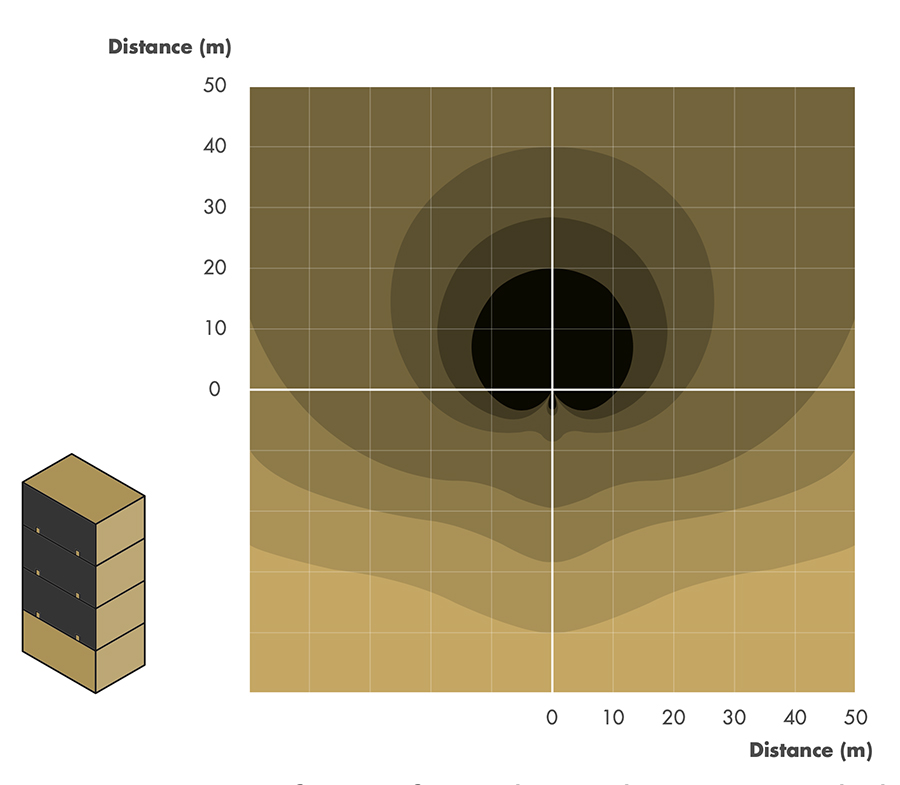
In the same way that we’ve become accustomed to K2 and other 3-way line sources, to their distribution of energy and color between large diaphragms, small diaphragms and drivers, we’ll do the same with L2, which acts differently, a little like a 10” two-way and 3” driver with 12” bass reinforcement, the sub acting as cement and an indispensable pedestal to sustain and accentuate the whole.
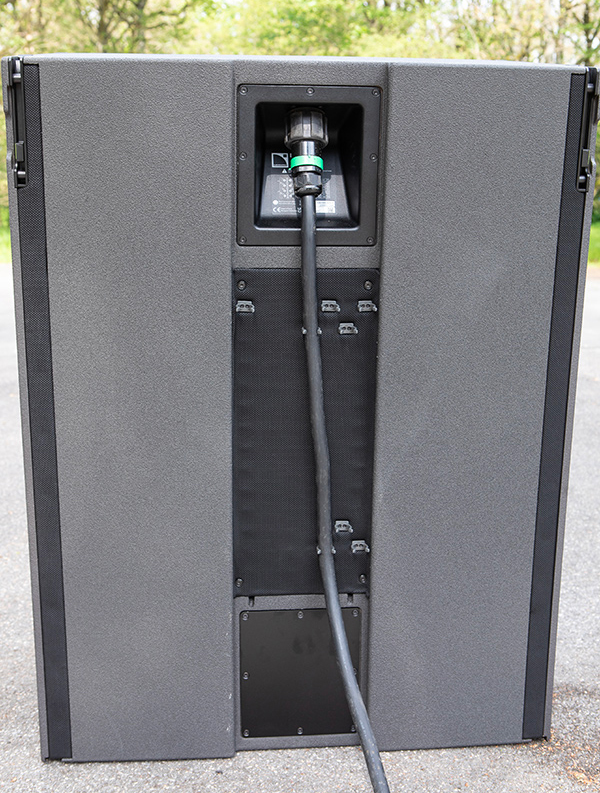
A latecomer to the cardioid head market, L-Acoustics has hit the bull’s-eye. The L2 is very clean and easy in terms of rear pressure, and should make life a lot easier for sound engineers who like the classic Alain Français “airy” sound, and will be less of a thrill for rooms with a Sputnik-style bottom end.
The power of the Autofilters in their task of smoothing and evening out, or even shaping vertical dispersion, is further enhanced by the resolution and power of the LA 7.16 DSP and the discrimination provided by its 16 separate channels per loudspeaker.
I can’t wait to be able to hear the L with a real live mix (the Marcoussis listening session was done with extracts of very good and representative tracks, but mastered) and, above all, in a L-ISA deployment, even if in such a case you’ll have to hold back your mix when faced with its density and precision at the high end.

For more information on L2, visit the L-Acoustics website







